
There are so many questions about how to properly store paint, one of these is:
Is it safe to store paint in the house?
Extreme temperature changes can cause leftover paint to become unusable. Since we all know how prone Michigan is to that, it’s best if your paint is stored indoors. The best place to store your leftover paint is in your basement or in a cupboard.
What is the safe way to store paint? Store the tightly sealed paint can upside-down so that the paint will form a seal around the lid. Store paint cans in dry areas that will not freeze. Store paint cans away from sources of spark or flame.
Here are the safe way to store paint with a storing paint temperature of Celsius:
- The temperature for storing paint should be between 60 and 80 degrees Fahrenheit (15-27 Celsius).
- Paint should be stored with very little air in the can.
- Clean the rim of the lid of your paint can to ensure that the lid will go back on tightly.
- Place a layer of the plastic rim between the can and the lid.
- Use a rubber mallet when closing the can. A regular hammer can damage the lid, but a rubber mallet will seal it tightly.
- Store the can upside down. This helps with the amount of air in the can by allowing the paint to create a seal against the lid.
How Do You Store Paints and Finishes Over the Winter?
It is extremely rare that you will buy the perfect amount of paint for a painting job that you’ll be doing. Most times it’s common to have to put your paint away for the next time, especially if you want to have some for touch-ups down the road. Sounds simple, right? Well, it can get a little more complicated, especially during the cold winter months. We’re here to let you in on how to store paint properly all year long!
Can we store paint in a glass jar? When storing paint in glass jars, it is best to keep it in a dark area, as light can alter the colour. A dark basement or closet is perfect. I lined up the jars on the worktable and opened one can of paint at a time. I used a paint stick to stir the very paint well.
Is it okay to store paint in plastic containers? Storing paint does have some limitations. Latex or water-based paints can normally be stored for about two-three years in an airtight container. For best results, we would recommend storing water-based paints in either PET or HDPE plastic bottles.
Here are some guidelines that you should follow for how to store your paint properly.
Guideline #1: Paint Storage Temperature
A huge thing that not a lot of people take into consideration when they want to store paint is the temperature of the room will be where they plan to provide paint storage.
- If the paint is water-based, do not store the paint in a cellar or garage. If you do this, you run the risk of the paint freezing over.
- Try to store paints and finishes at room temperature in a closet, a specific paint storage locker or something similar.
- If your paint is oil-based or lacquer, you don’t need to worry as much about the temperature of the room, as it takes a lot more to freeze this kind of paint. We still recommend that you store paints at room temperature though.
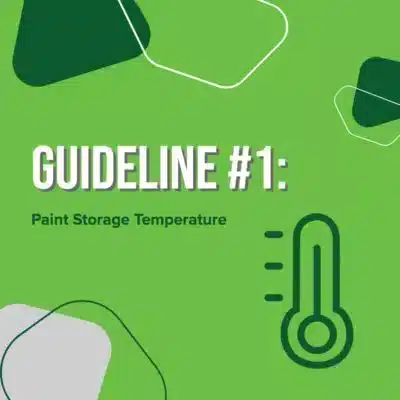
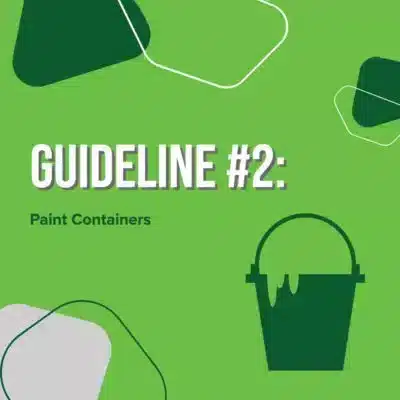
This may seem obvious, but the container for how to store paints properly is extremely important. So, what is the best container to store paint in? The best containers for storing paint are those that have a lid that prevents oxygen from getting into the container. Either a glass or plastic bottle that has lids that are made of plastic or metal. These containers are inert, meaning they won’t react with the paint itself or any other chemicals that may be present. If you do not have these types of containers, it’s important to store your paints in an airtight container that prevents moisture from getting inside. It should also be large enough so no oxygen can enter the bottle and cause oxidation.
- •If the paint can that you have is damaged, go to your local hardware or paint store in Toronto to pick up a new one.
- •If you can’t find empty paint can find a vacuum-sealed jar to store your paint in.
- •When applying the lid to the container, make sure there is no paint on the edges of the container. When it dries, the paint will glue the can shut.
- •Make sure the lid is sealed 100%. If it is not, air can get into the paint container and you run the risk of the paint drying while in the can.
Guideline #3: Label the Lid When You Want to Store Paints
If you just finished an interior painting job, it’s important to make sure you label each paint can with the corresponding room or areas that were painted. This will keep you from having to open each can to check the paint colours when you are doing interior touch-ups.
It’s equally important to keep the paint colour code and the number displayed. This is important so if you need more paint, then the paint store knows which paint to provide. Also, if there were any alterations to the paint formula, it’s important to note that on the can as well.
If it’s for interior painting or exterior painting, you can label that information as well.
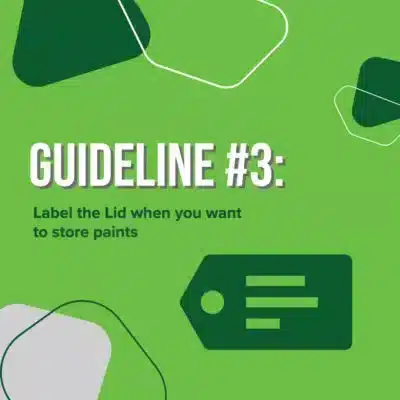

Guideline #4: Stay Organized
- When thinking about ways to store paint properly, keep it all in one area and somewhere you will remember. The most common areas to store paint are basement storage areas or closets.
- Do not store it in the garage, especially in the winter months. The paint will freeze since most garages are not heated over the winter.
- Never store the paint in a damp area (cold storage or a porch area). The paint can rust and potentially ruin.
How Long Can Paint Be Stored Before it Goes Bad?
Paint is only good for a few months after it has been opened. If you have leftovers from a previous paint job and are planning to use it again, make sure that the can is completely sealed before storing it away in your garage or basement.
The length of time that paint will remain usable depends on how well it was stored and the type of paint itself.
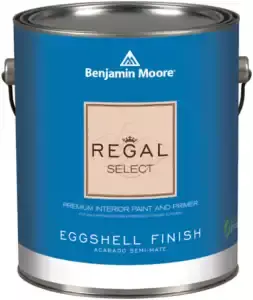
How Do You Know if Paint Has Gone Bad?
So, maybe you’ve left things a little too long and you’re unsure about whether or not your paint is still good. There are a few tried and true ways to tell.
- Do a sniff test. That nose of ours can tell us so many things without barely even trying! If you’re no stranger to interior painting, open your can and give it a smell. Your nose will tell you if it’s not smelling so fresh anymore.
- Get out your stir stick. We’re all familiar with using interior house paints and the stir sticks that always come along with them. If you’re opening an old can of paint and need to test things out, give it a stir. If it doesn’t want to mix up or even fully separate, it’s gone bad.
- Test the interior paint on a surface. Of course, you can’t go wrong actually testing out the paint on a surface. If it’s rough and bumpy and just doesn’t look smooth and silky anymore, the paint is no longer good for use.
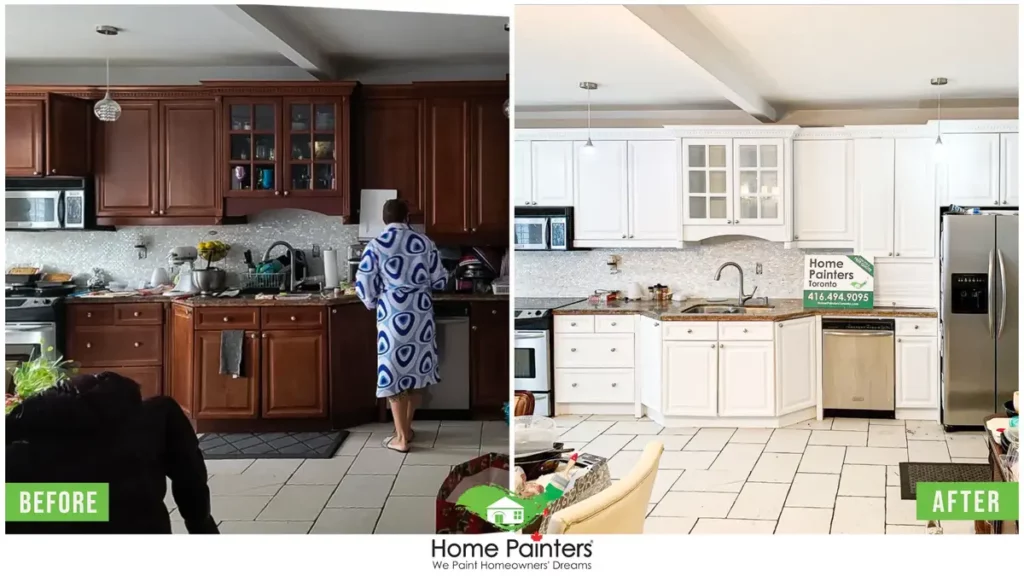
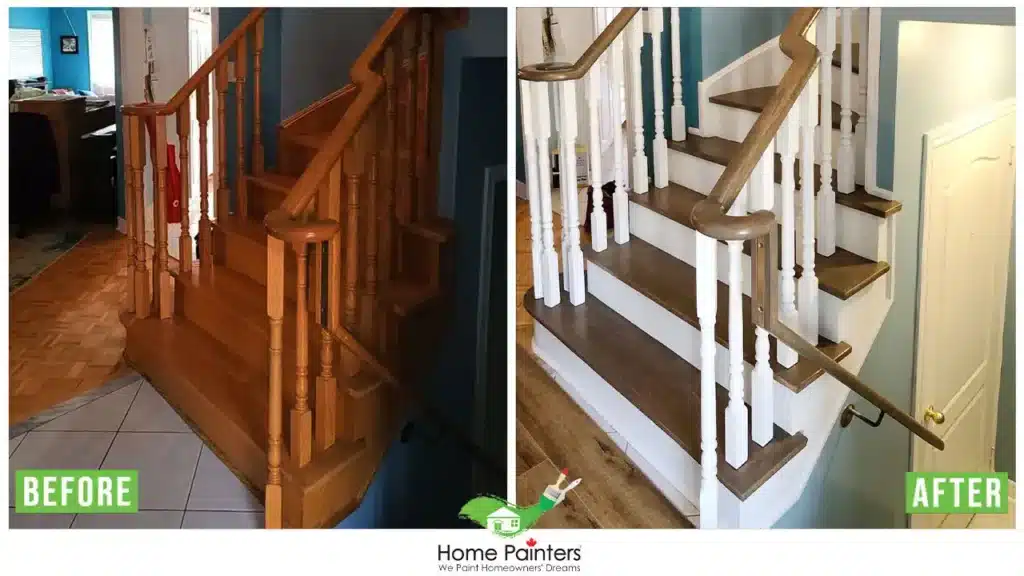
Now That You’re Organized, Did You Know There Are Actually Some Advantages to Painting Your House in the Winter?
Now that we’ve helped to clue you into paint storage and all that entails, did you know there are actually many advantages to doing interior painting in the winter months? That’s right. You might not think so, but it’s true. For one, the paint actually dries faster in the winter months. There’s no humidity and way less moisture in the air than during the summertime.
Is it okay to store paint in hot weather? storing paint in hot weather While today’s paints are versatile enough to handle a wide range of temperatures for a short time, storing them for long periods should be done at temperature ranges between 60 and 80 degrees Fahrenheit.
Is there a controlled temperature paint storage?
Paints are considered “flammable and combustible materials” according to OSHA. Storing large volumes of paint can be extremely dangerous; avoiding safe paint storage requirements may result in fines and other penalties. Proper paint storage buildings can help protect personnel and facilities that handle, store, mix and dispense paints and other flammable liquids.
Paints or other flammable liquid storage that exceeds 60 gallons must be stored in a paint storage building. To protect flammable liquids against flash fire, prevent paint containers from building excessive internal pressure and contain flammable liquid spills or leaks. Depending on their location in relation to other buildings or property lines, indoor and outdoor storage buildings may require fire-rated construction listed by the National Fire Protection Agency (NFPA 251-1969).
What is spray paint storage temperature?
Store spray paint cans in the garage only when the temperature is between 55 and 80 degrees Fahrenheit. Higher or lower temperatures may degrade the paint and make it unusable. Never store spray paint cans in spots that are above 120 degrees Fahrenheit.
What about dulux paint storage temperature?
They are not very effective below 50°F (10°C). High humidity can affect the way paints dry, especially at temperatures that are below 50°F (10° C). High humidity can interfere with the supply of oxygen necessary for the curing of alkyd paints. And can delay the tack-free time from hours to days.
How to store paint without a lid?
Place a piece of plastic wrap over the opening and then replace the lid. Firmly seal it with taps from a rubber mallet and then store the can upside down to prevent air from entering the container.
You’re also likely to come across inexpensive and lower rates for interior home painting during the winter as well. Sometimes you can save as much as 30% off house painting services from professional painters. If you hit them up at just the right time. Check out this blog or our video below for other great reasons to paint your house during the winter.
Advantages of Painting Your Home during Winter Time
More Interesting Blogs Related to
“HOW TO STORE PAINT PROPERLY”
If you want your painting projects to be done as quickly as possible, it’s best to let professional house painters handle it. With over 35 years of experience in home painting services and home renovations.
Call us NOW at 416.494.9095 or email us at Brian@HomePaintersToronto.com to get a free interior home painting estimate. And don’t forget to follow us on all of our social media channels as well.





